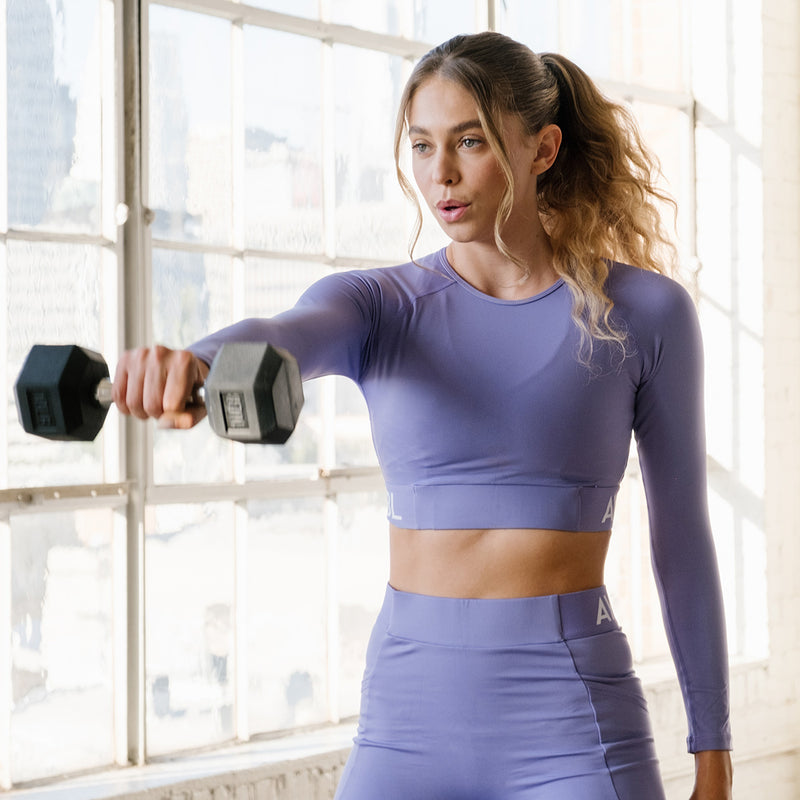
Functional Training: The Workout You Never Knew Your Body Needed
‘Functional fitness’ is a term that throws even the most seasoned fitness pros. Otherwise known as functional training, it’s a buzzword that’s been thrown around in gym circles or classes without most people being entirely clear what it actually means. Surely all training is functional? Kind of, but it’s the real-life functionality we’re talking about that’s often left out of other workout routines, increasing risk of injury.
Besides, what good is a sculpted bum if you can’t squat down to pick up your keys? And let’s face it, toned biceps are kind of useless if you can’t even lift your gym bag, right?
From the best functional exercises to clearing up what functional strength training is, we’re giving you an overhaul, so you can get with the programme.

WHAT IS FUNCTIONAL STRENGTH TRAINING?
Functional training is a type of strength training that equips you for real-life, daily living stuff like bending, twisting, pushing and pulling. Think anything from squatting down to pick something off of the floor to reaching for your protein powder on a high shelf.
Most functional fitness contains multi-joint movement patterns that involve your knees, hips, spine, elbows, wrists and shoulders, which all build strength and improve your range of motion.
It all comes down to being practical, but don’t mistake that for boring.
WHAT ARE THE BENEFITS OF FUNCTIONAL TRAINING?
Not only does functional training make daily activities easier to perform (no more having to pull on a tight pair of jeans without throwing your back out), but you will also notice a change in your overall strength and stability. This creates a balance among your muscles and decreases your risk of injury. Doing functional fitness will also help to:
- Improve coordination, balance and body awareness;
- Build power and strength;
- Improve mobility and your body’s ability to work efficiently as one unit;
- Build speed.
SHOULD EVERYONE DO FUNCTIONAL FITNESS?
Absolutely, functional exercises should be a part of every workout! This type of training isn’t high intensity and is suitable for all ages and abilities, which is part of its beauty. Any movement can be altered for ability level via tempo, reps or added resistance.
It’s especially recommended for anyone sat working at a desk for prolonged hours of the day, as most functional exercises work the muscles that keep your posture strong. Functional training also improves mobility through the hips and shoulders, which are the typical areas of discomfort for those sitting for long periods of time at a desk.
Not just for WFH-ers, from a strength training perspective, functional training is far more efficient, in the way that it trains the muscles to work together - which is more of a reflection of what happens IRL.
READ MORE: 6 Mobility Exercises To Improve Your Posture
BEST FUNCTIONAL EXERCISES TO TRY
If your body is healthy and injury-free, try giving this functional fitness workout a go. It focuses on those key multi-directional moves, to get you strong and steady for everyday life.
1. WALKING LUNGE
This works our body unilaterally which is great for fixing any imbalances in the body and improving coordination, as well as building strength and muscle endurance.
2. PUSH UPS
These are great for our upper body strength, as well as core stability, and a great exercise for scaling up or down depending on ability.
3. GOBLET SQUATS
These mainly target our quads, glutes and hamstrings, and are a great exercise for building strength. Try with a dumbbell if you want to challenge yourself.
4. DEADLIFTS
Deadlifts are really effective at increasing functional strength, as they activate your largest lower body muscles, and also train you for the functional activity of safely lifting objects off of the floor in everyday life.
5. BENT OVER ROWS
This functional exercise is one of the best back day exercises to build more muscle and strength. They can also help to promote better back posture, balance, core stability and strength.

Functional training has hugely improved in popularity in recent years - and for good reason, too. Because who doesn’t love a workout you can do while on a call when you’re WFH?
Functional fitness workouts need to be done on a regular basis to provide results. But you’ll notice a real change in the way your body looks and feels if you do them consistently.
Aim to do your functional exercises two to three times per week. As you become stronger and more coordinated, add new exercises that challenge your body and build strength and coordination.
You can discover more guided workouts, including athlete-led routines, here.